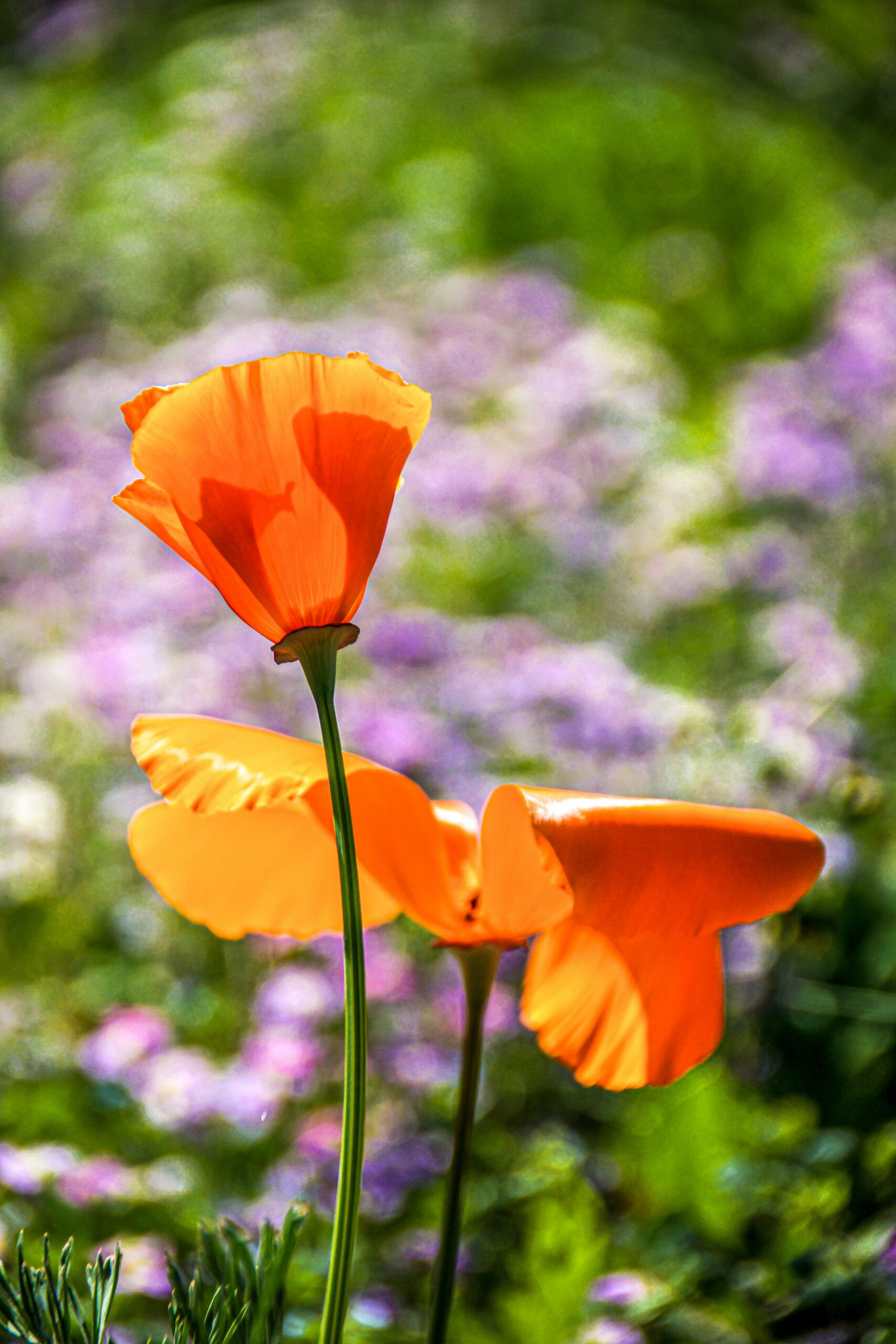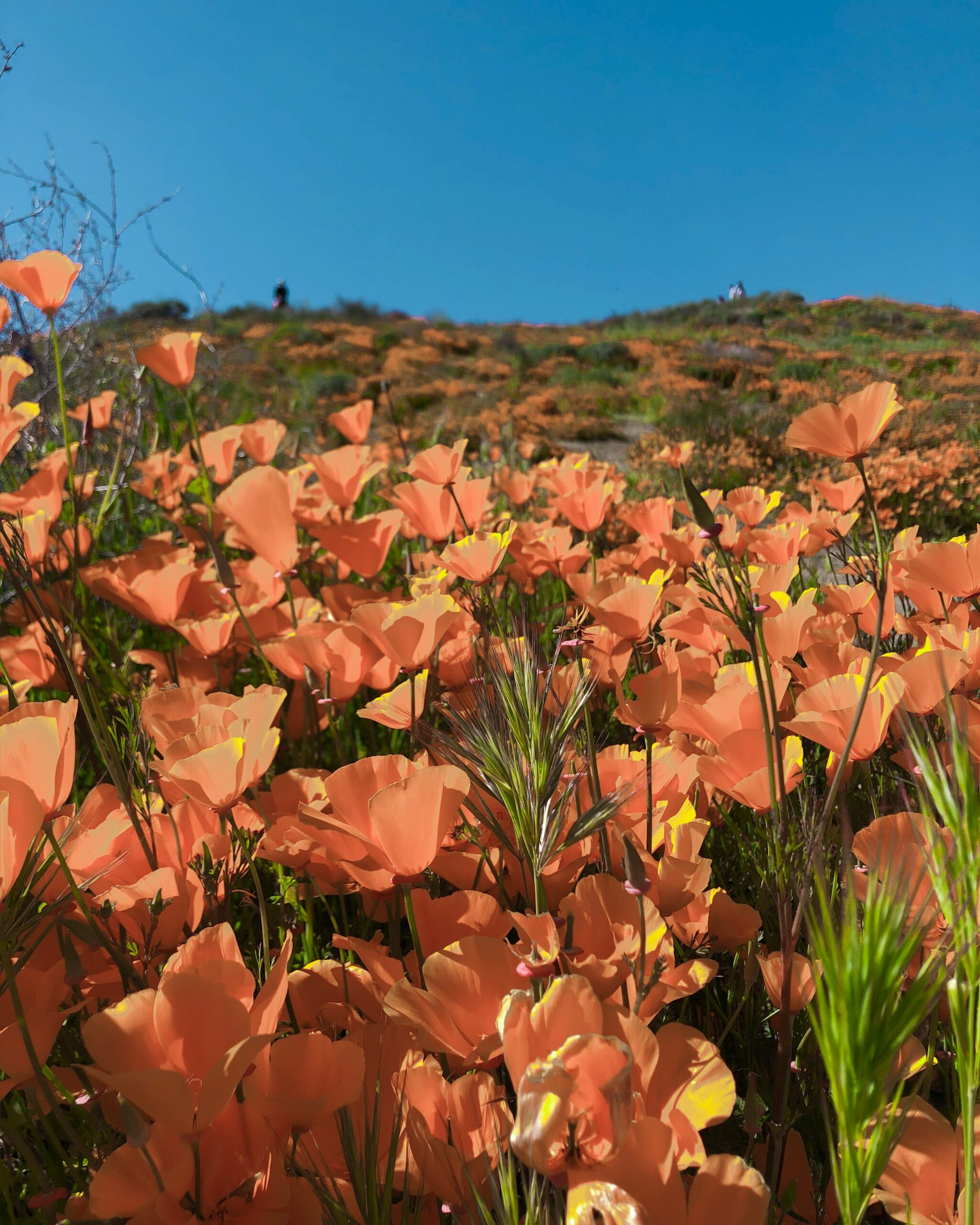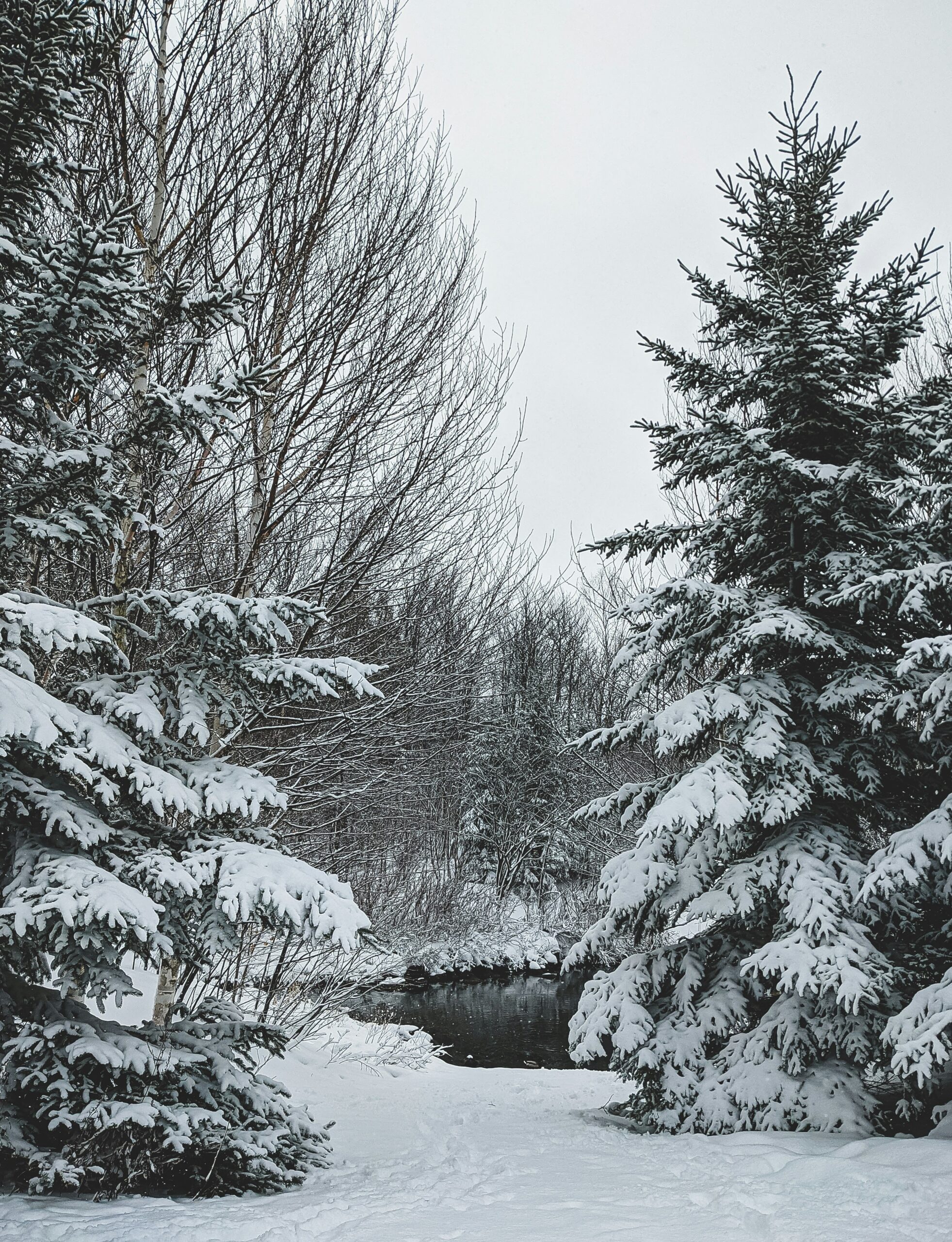Fun Facts of the California State Flower: Golden Poppies Through History
The vibrant orange-gold California Poppy brightens hillsides across the Golden State, captivating both residents and visitors with its stunning display. The California State Flower, officially named Eschscholzia californica, gained its prestigious status on March 2, 1903, and continues to symbolize the state's natural beauty and resilience.
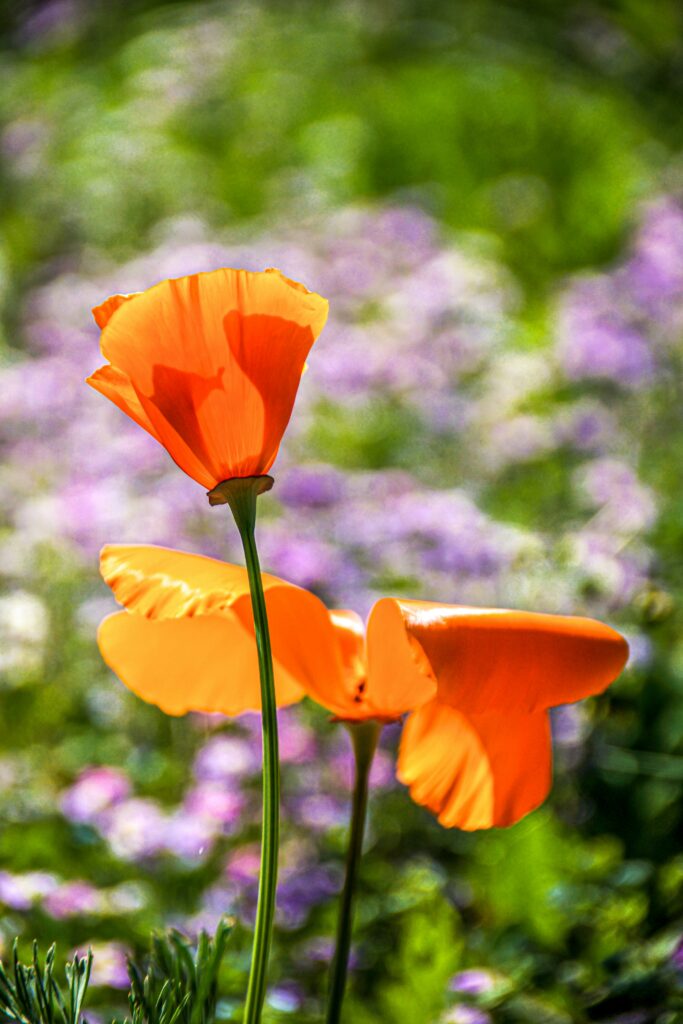
When you spot these eye-catching blooms, known as cups of gold, you're witnessing a plant perfectly adapted to California's climate. These remarkable flowers close their petals at night and during cold, windy days, reopening when conditions improve – a natural response that protects their delicate inner structures.
You can celebrate these iconic flowers every April 6th on California Poppy Day, when the state honors its beloved symbol. The flowers create stunning natural displays, particularly during spring, when entire hillsides transform into seas of golden-orange blooms.
Fun Facts of the California State Flower: Golden Poppies Through History
History and Naming of the California Poppy
The California Poppy received its distinctive scientific name through European exploration and gained official recognition as a state symbol in the early 20th century.
Discovery and Nomenclature
The scientific name Eschscholzia californica honors Dr. Johann Friedrich Eschscholtz, a Russian botanist who first documented the flower during an expedition to California in 1816. The ship's poet and naturalist Adelbert von Chamisso named the genus after his friend and fellow explorer.
You'll find this flower referred to by several common names, including golden poppy and cup of gold, reflecting its brilliant orange color.
The plant's natural range extends from Oregon through California and into Mexico, where indigenous peoples recognized its medicinal properties long before European contact.
Adoption as the State Flower
California officially designated the California Poppy as its state flower on March 2, 1903. This selection celebrated the flower's widespread presence across the state's landscape and its connection to California's identity.
The golden-orange blooms earned special recognition as a symbol of California's natural heritage. The state even designated April 6th as California Poppy Day to honor this beloved wildflower.
Your state flower represents more than just natural beauty – it serves as a living link to California's gold rush era, when the bright orange petals dotted the same hillsides where prospectors sought their fortune.
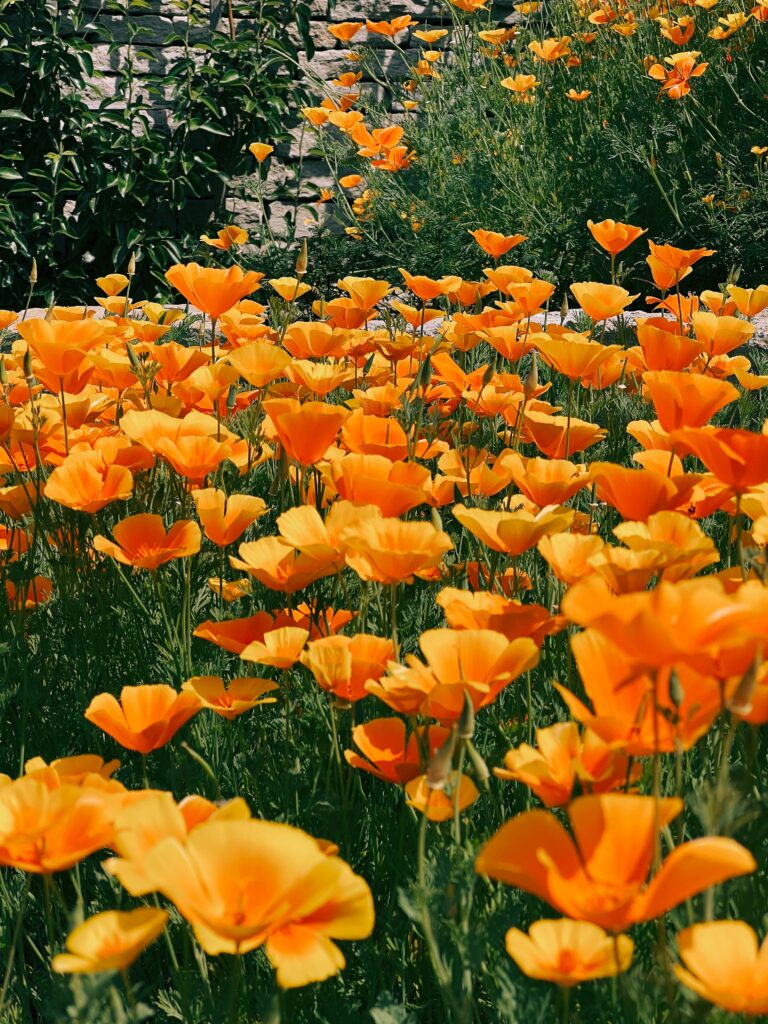
Botanical Characteristics
The California poppy stands out with distinct physical features and growth patterns that make it well-suited to its native habitat. These vibrant wildflowers display remarkable adaptability and distinctive characteristics that set them apart from other members of the Papaveraceae family.
Physical Description
The most striking feature is the flower's brilliant orange petals, though you'll find varieties in yellow and red shades. Each flower has four silky petals that form a cup shape, typically measuring 2-4 inches across.
The foliage consists of finely divided, blue-green leaves that create a delicate, feathery appearance. These leaves grow in a basal rosette pattern close to the ground.
The plant produces long, slender seed pods that split open when mature to release small, dark seeds.
Growth Habits and Lifecycle
This iconic plant thrives as an annual in most regions but can act as a short-lived perennial in mild climates. You'll notice the flowering period typically extends from early spring through summer.
The plants grow 12-18 inches tall and spread 6-12 inches wide. They prefer full sun exposure and well-draining soil.
Your California poppies will self-seed readily, making them excellent for naturalized areas. They go dormant during dry periods and can resprout when conditions improve.
The flowers open in sunny weather and close at night or on cloudy days, displaying a natural response to light conditions.
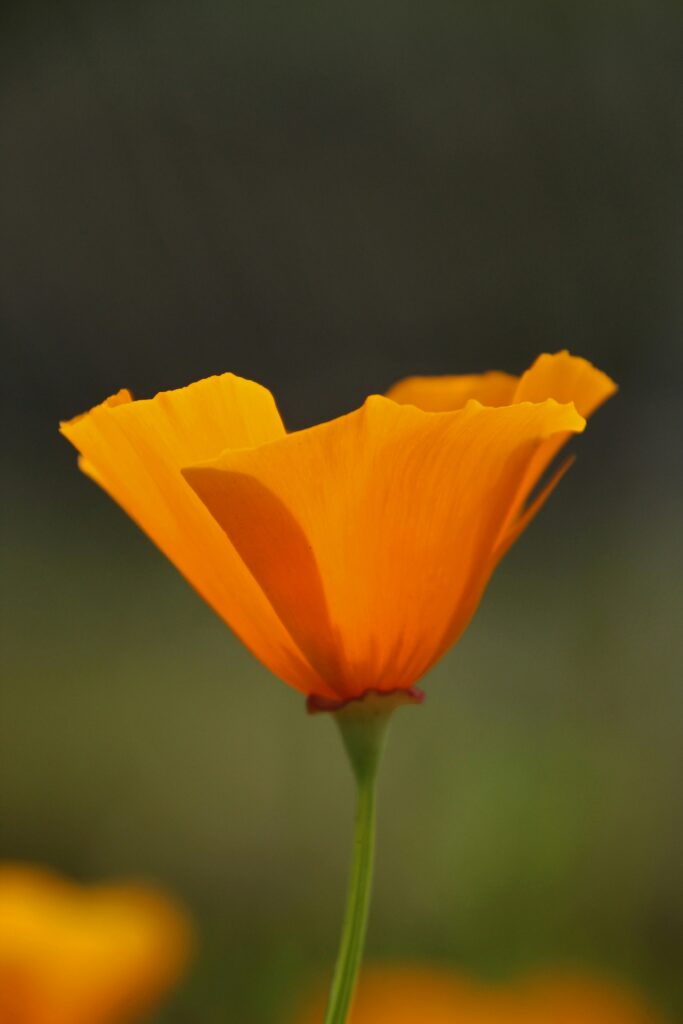
Cultivation and Care
California poppies adapt readily to garden settings and thrive with minimal maintenance. These drought-hardy plants reward gardeners with abundant blooms when given proper growing conditions.
Growing Conditions
Your California poppies will flourish in full sun with well-draining soil. Plant them in sandy or loamy soil with a pH between 6.0 and 8.0. These hardy flowers need minimal water once established.
Don't fertilize your poppies – they prefer poor to moderate soil. Too much nutrient-rich soil produces excess foliage at the expense of flowers.
Space plants 6-8 inches apart to allow proper air circulation. These drought-tolerant wildflowers perform best in USDA zones 6-10.
Propagation Techniques
Sow seeds directly in the garden in early spring or fall. Simply scatter seeds on prepared soil and press them lightly – they need light to germinate.
Your seeds will sprout in 10-15 days when soil temperatures reach 60°F. Thin seedlings to proper spacing once they develop true leaves.
Save seeds from spent flowers by collecting the dried seed pods. Store them in a paper envelope in a cool, dry place.
Common cultivars include ‘Alba' (white flowers), ‘Red Chief' (red blooms), and ‘Golden West' (deep orange). These varieties grow just as easily as the species plant.
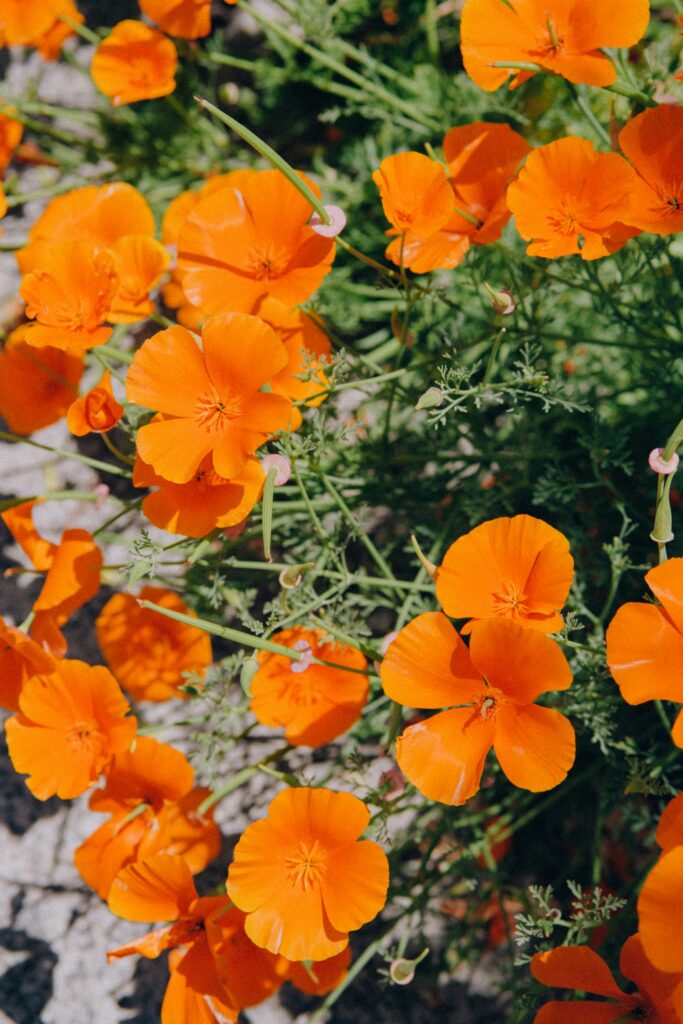
California Poppies in Ecosystems
The California poppy plays a vital role in maintaining ecological balance across western North America's diverse landscapes. These bright orange wildflowers serve as crucial food sources for native wildlife while helping stabilize soil in their natural habitats.
Role in Native Habitats
California poppies thrive in dry, sandy soils and help prevent erosion through their deep taproot systems. You'll find these flowers growing abundantly on hillsides, coastal areas, and desert margins throughout California.
These hardy plants adapt exceptionally well to drought conditions, making them perfect for xeriscaping and natural habitat restoration projects. Their presence indicates healthy soil conditions and contributes to local biodiversity.
California poppies create natural groundcover that provides shelter for small insects and protects soil microorganisms. During spring blooms, their golden carpets transform barren landscapes into vibrant ecosystems.
Interactions with Pollinators
Native bees, especially mining bees and bumblebees, rely heavily on California poppy pollen as a food source. When you observe these flowers, you'll notice they open during sunny days and close at night or in cold weather to protect their precious pollen.
The flowers' bright orange color and UV patterns act as natural landing strips, guiding pollinators to their nectar rewards. Your garden's poppy patch can support dozens of beneficial insect species.
Beetles and butterflies also frequent these blossoms, creating an intricate web of pollinator relationships. Each flower can produce hundreds of seeds, ensuring future generations of both plants and their insect partners.
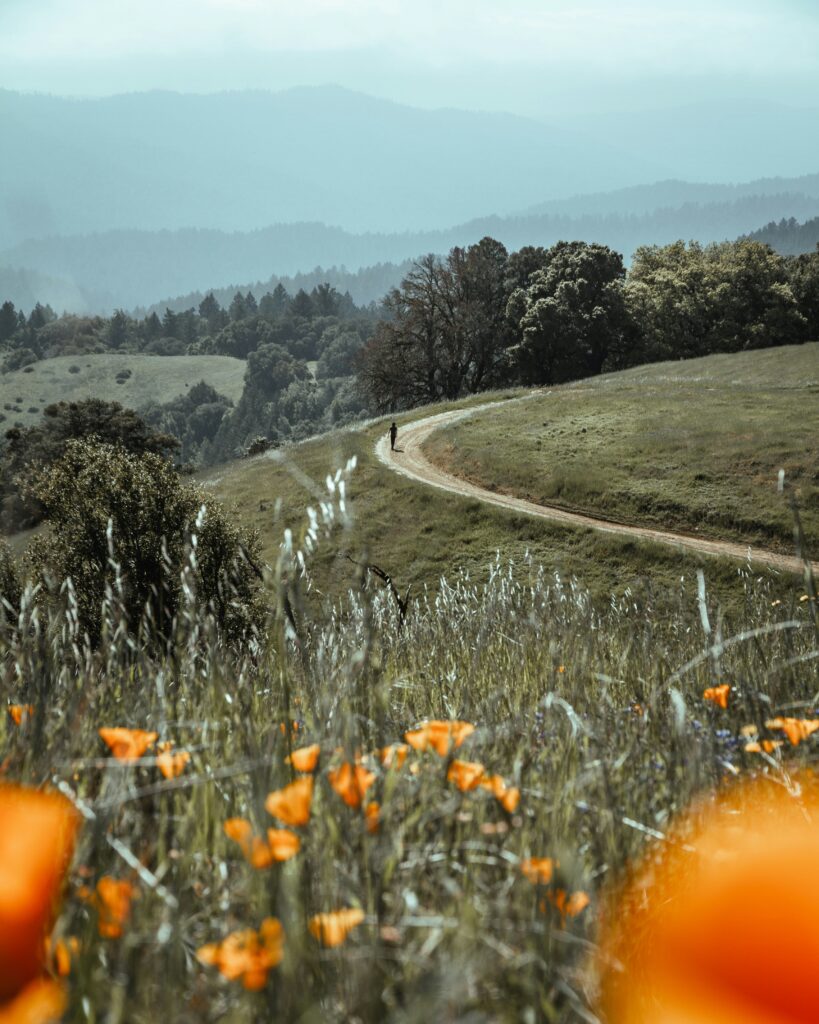
Environmental Adaptations
The California poppy thrives in challenging environments through remarkable natural defenses and survival mechanisms. These adaptations enable the flower to flourish in California's diverse climate zones.
Drought Tolerance
Your California poppy garden will benefit from this plant's exceptional ability to thrive in dry conditions. The plant develops a deep taproot that extends into the soil to access water reserves during drought periods.
When you examine the poppy's leaves, you'll notice they're finely divided and bluish-green, reducing water loss through transpiration. These specialized leaves also have a waxy coating that helps conserve moisture.
During extended dry spells, California poppies can enter dormancy, allowing them to pause growth until conditions improve. This natural water-saving mechanism helps protect your garden's poppies through California's long, dry summers.
Resilience to Conditions
Your California poppies will demonstrate impressive adaptability across various growing conditions. The plants excel in poor, well-draining soils where other flowers might struggle.
These vibrant wildflowers flourish in full sun exposure and can withstand both coastal fog and inland heat. Their sturdy stems flex rather than break in strong winds.
The flowers close their petals at night and on cloudy days, protecting their reproductive parts from harsh weather. This natural defense mechanism also helps preserve pollen for optimal pollination conditions.
In your garden, these poppies will self-seed readily, establishing new plants in suitable locations without requiring your intervention.
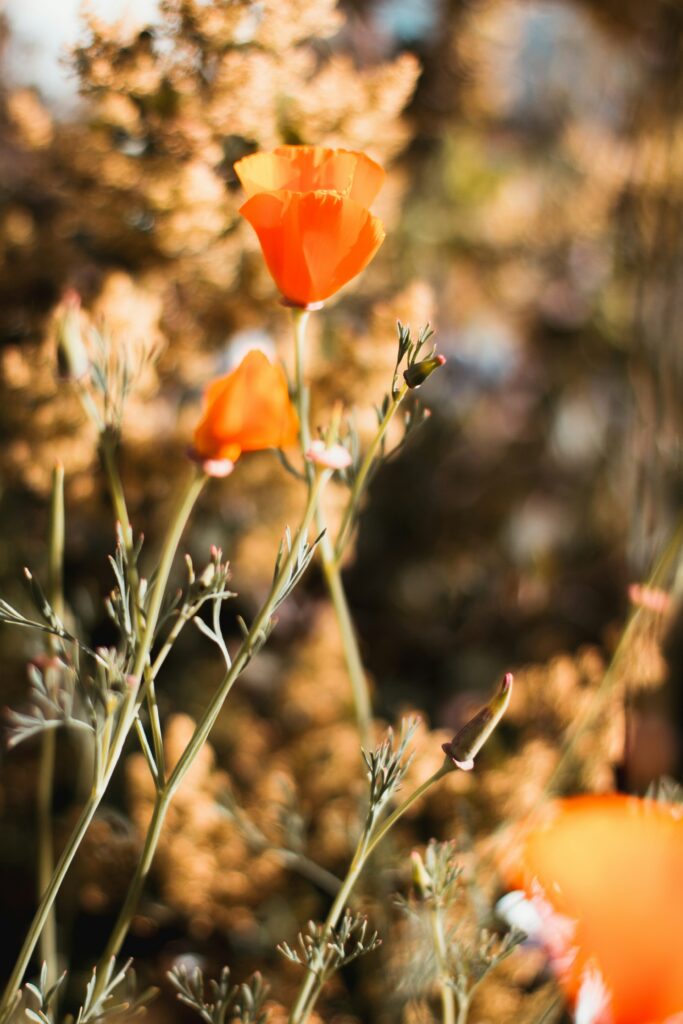
Ecological Significance
The California poppy plays vital roles in supporting local ecosystems and maintaining soil stability across California's diverse landscapes. These bright orange flowers create essential habitat spaces while preventing soil degradation.
Contribution to Biodiversity
The California poppy supports native pollinators and provides critical food sources for bees, butterflies, and other beneficial insects throughout its blooming season.
You'll find these flowers creating natural corridors that connect fragmented habitats, especially in places like the Antelope Valley California Poppy Reserve.
Native bird species rely on California poppy seeds as a food source during crucial times of the year. The plants also provide shelter for small wildlife, including beneficial insects that help control pest populations.
Prevention of Erosion
California poppies develop deep taproots that effectively anchor soil in place, making them excellent natural erosion control agents.
When you plant these flowers on slopes or disturbed areas, their root systems help stabilize the soil and prevent runoff during rainy seasons.
The plants spread naturally through self-seeding, creating dense patches that protect bare soil from wind and water erosion. Their ability to thrive in poor soil conditions makes them particularly valuable for stabilizing degraded landscapes.
The flowers' drought-tolerant nature means they continue providing soil protection even during California's dry seasons, when erosion risks are highest.
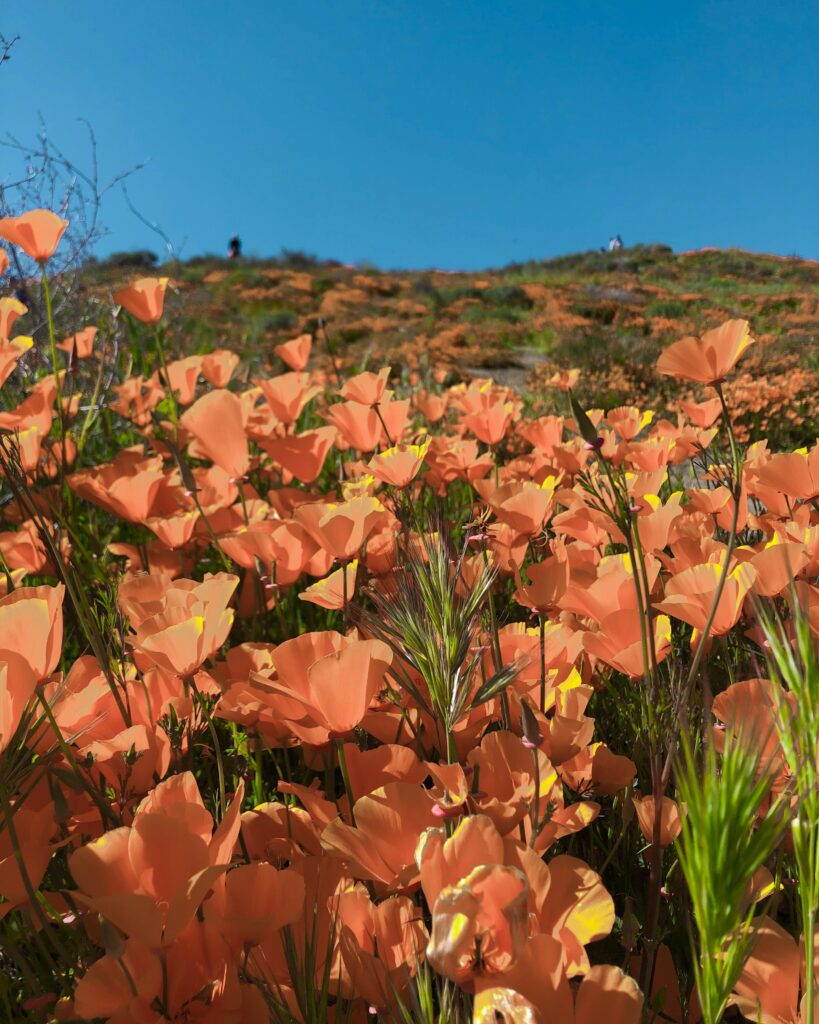
Symbolic and Cultural Importance
The California Poppy represents both natural beauty and cultural heritage through its vibrant orange blooms. Native tribes and modern Californians alike have celebrated this flower's deep connections to the land.
The Golden State Emblem
The California Poppy became the state flower in 1903 to symbolize California's remarkable natural abundance. You'll find these golden blooms adorning welcome signs, art pieces, and official state materials across California.
When you see these brilliant orange flowers carpeting hillsides, you'll understand why they're called “cups of gold.” Their presence helped inspire California's nickname as the Golden State, reflecting both the gold rush era and these radiant wildflowers.
Mythology and Folklore
Native American tribes viewed the California Poppy as a sacred gift. You can trace their traditional use of the plant through generations of oral history and cultural practices.
The flower plays a central role in local celebrations and cultural festivals. Each April, you can join thousands of visitors at the California Poppy Festival to honor this beloved state symbol.
Native peoples believed these flowers held the captured sunlight of summer. When you watch the poppy petals close at night and reopen with the morning sun, you'll understand why this magical quality inspired so many stories.
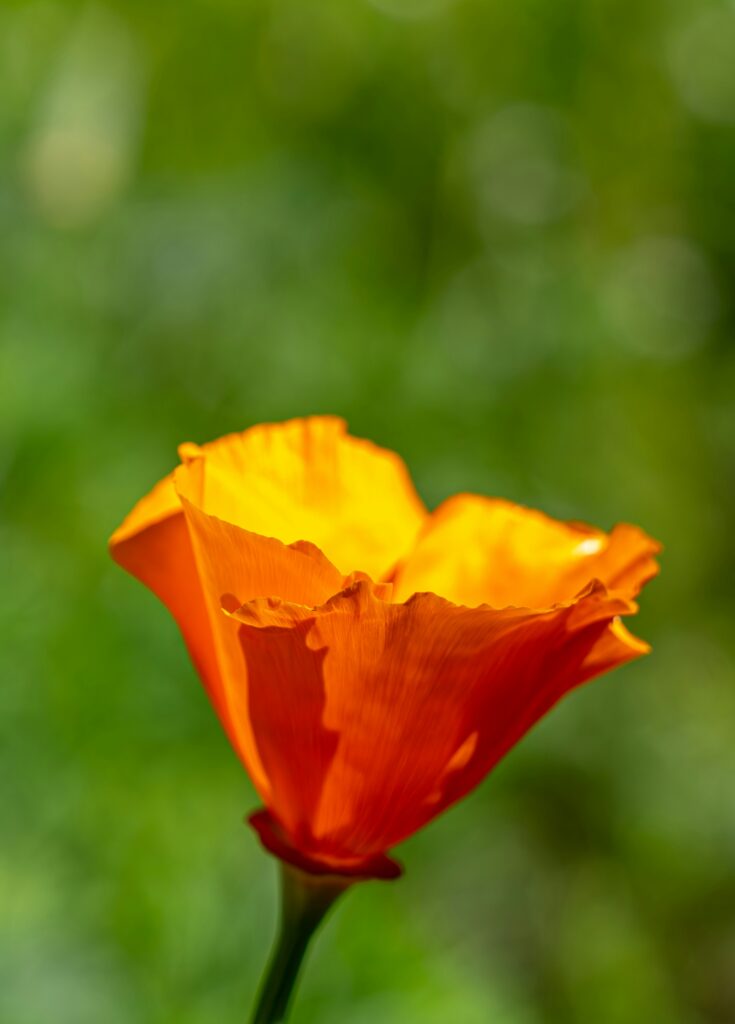
Use in Healthcare and Industry
The California poppy offers valuable medicinal compounds and finds applications in both healthcare products and cosmetic formulations. Its natural properties make it effective for treating anxiety and sleep issues, while the flower extracts enhance beauty products.
Medicinal Properties
You can find California poppy extract in natural sleep aids and anti-anxiety supplements. The plant contains alkaloids that produce mild sedative effects and help reduce nervous tension.
When used as a tincture or tea, California poppy can help improve your sleep quality without the strong side effects of conventional sleep medications.
The plant's compounds work by gently calming your nervous system, making it useful for treating mild insomnia and restlessness.
Poppy in Cosmetics
Beauty companies incorporate California poppy extract into skincare products for its soothing properties. The flower extract helps reduce skin inflammation and redness.
You'll find the extract in anti-aging creams and serums because it contains antioxidants that protect your skin from environmental damage.
Face masks and toners featuring California poppy can help balance your skin's natural oil production while providing a gentle calming effect.
The plant's natural compounds also make effective ingredients in under-eye creams, helping to reduce puffiness and dark circles.
Celebrations and Events
California's state flower inspires numerous annual celebrations that draw thousands of visitors to witness the vibrant orange blooms and participate in community festivities.
California Poppy Day
April 6th marks the official California Poppy Day, a special occasion for celebrating the state's beloved wildflower. You can join educational activities and nature walks organized by local schools and community groups across California.
The day serves as a perfect opportunity to teach children about native plant species and their importance to local ecosystems. Many schools incorporate poppy-themed art projects and botanical lessons into their curriculum during this time.
Regional Festivals
The Lancaster California Poppy Festival stands as the largest celebration dedicated to the state flower. Each spring, you can experience live entertainment, craft vendors, and educational exhibits about native flora.
Local communities organize smaller poppy-themed events throughout the blooming season. These festivals typically feature guided nature walks, photography contests, and botanical workshops.
Poppy Reserve Visitation
The Antelope Valley California Poppy Reserve welcomes visitors during peak blooming months, typically February through May. You'll find eight miles of trails winding through the vibrant poppy fields.
Peak visiting hours are mid-morning to early afternoon when the flowers fully open. The reserve offers wheelchair-accessible paths and interpretive programs to enhance your experience.
Rangers lead guided tours during weekends in spring, helping you identify various wildflower species and learn about their ecological roles.

